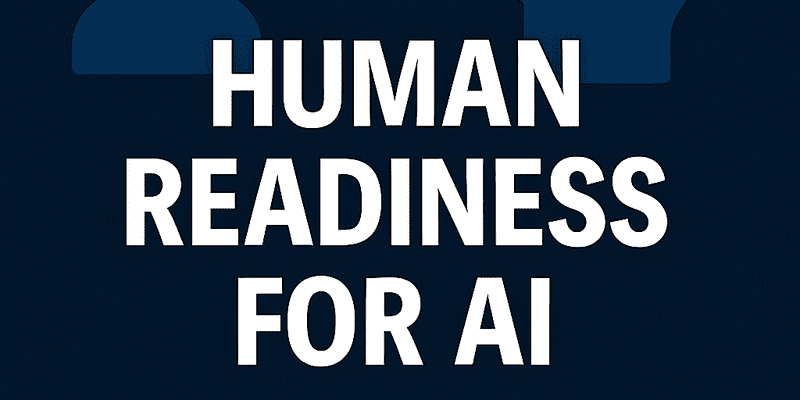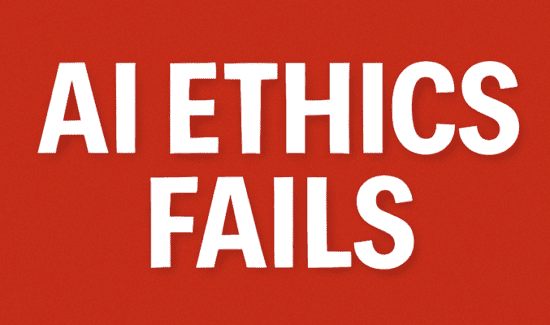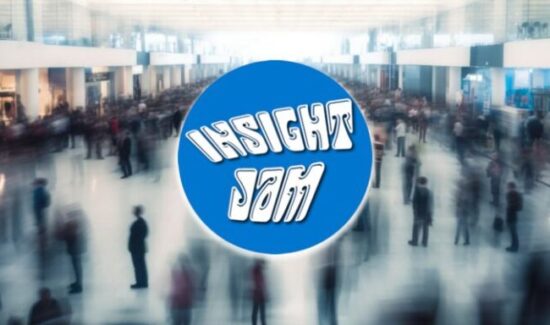Human Readiness for AI: Preparing People for an AI-Augmented Future

Solutions Review Executive Editor Tim King offers this human readiness for AI primer on preparing people for an augmented future.
Human readiness is the missing half of most AI strategies. Tooling can be purchased; trusted outcomes must be earned by educating people, reshaping roles, and tuning culture so experimentation feels safe and useful. Our expert panel—spanning labor economics, organizational effectiveness, data/AI strategy, and enterprise transformation—converged on a simple idea: readiness becomes capability when literacy is democratized, reskilling is embedded in real work, and leaders model curiosity over certainty. Data quality and governance still matter, but progress stalls without people who understand what AI can and cannot do, and managers who reward thoughtful use rather than mere usage.
In practical terms, AI literacy goes well beyond writing code. It’s plain-language fluency about capabilities and limits, where bias and risk live, and how to ask better questions of systems and of ourselves. That literacy must be accessible to all, not a gated bootcamp for the few. The most durable approach is modular learning in the flow of work: short, role-anchored lessons paired with the task at hand, reinforced by visible wins and psychologically safe feedback loops. Leaders should treat prompt craft and output verification as basic business skills, like spreadsheets once were, and pair them with human strengths—empathy, judgment, and systems thinking.
Human Readiness for AI Meaning
Reskilling has to match the speed of change. Quarterly micro-credentials tied to live business outcomes beat marathon courses that sit outside the job. Executive coaching is no longer a perk but a control surface for change leadership—managing ambiguity, combating impostor syndrome, and making decisions when the answer is not yet knowable. Pair hard and human skills deliberately: data quality fundamentals, agent supervision, and security on one side; adaptive leadership, communication, and second-order thinking on the other. The aim is steady movement from knowledge work to wisdom work, where discernment, ethics, and context become the differentiators AI cannot replace.
Culture and operating models must evolve in tandem. People need clarity about the tasks AI will augment, the guardrails that keep use safe, and the new responsibilities that follow. Top-down enablement helps—leaders should use the tools first, share real artifacts, and set transparent expectations for adoption while providing time, training, and support. Work itself will feel more fluid: less siloed by function and more orchestrated across humans, AI agents, and partners. Entry-level experience doesn’t disappear; it changes shape. Recreate apprenticeship with supervised agent workflows, simulations, and structured reviews so newcomers still learn how real work gets done, even as routine tasks shrink.
The panel emphasized well-being as strategy. Sustainable adoption depends on integrative health—energy, boundaries, and mental fitness—because the pace of change is a constant, not a spike. “Health is our wealth” isn’t a slogan; it’s an operating constraint. If curiosity is the growth engine, care is the fuel.
The A-5E Framework for AI Literacy in the Flow of Work
-
Educate: Show concrete, role-specific use cases and benefits.
-
Empower: Provide safe tools, prompts, policies, and live support.
-
Environment: Create slack for sandboxing and experiments in the daily workflow.
-
Engage: Close the loop on fears and feedback; showcase real wins quickly.
-
Execute: Drive a measured adoption plan with owners, metrics, and outcomes.
Translating this into motion, begin with foundations: simple guardrails for data use, privacy, attribution, and escalation; a living use-case library organized by role; and a baseline on data fitness for the top few workflows. Roll literacy out inside existing tools with office hours and champions who celebrate small wins and document patterns others can reuse. Follow with two short skill sprints per role—think “Agent Supervisor 101” and “AI-Assisted Analyst”—each anchored to a measurable improvement like cycle-time reduction or quality lift. Evolve the operating model toward a portfolio of projects that intentionally combine people, agents, and vendors, and refresh job architectures, pay bands, and career paths to reflect AI-augmented tasks rather than legacy duty lists.
Measurement should stay simple and human-centered. Track adoption as the share of roles with a live use case and weekly active AI users; performance via task time deltas, quality lifts, and rework rates; risk through the percentage of use cases with completed assessments and incidents per 1,000 AI tasks; capability with literacy checks, micro-credential completion, and prompt pattern reuse; culture through pulse signals about safety to experiment and coaching participation; and well-being through burnout risk and healthy PTO usage. These metrics keep the program honest without turning learning into surveillance.
The skills mix to prioritize is clear. Adaptive leadership and change navigation create the conditions for learning. Critical thinking and AI output verification keep errors from compounding. Systems thinking surfaces second-order effects and incentive mismatches. Communication and facilitation help teams coordinate across humans and agents. Ethics and policy judgment translate principles into daily decisions. Agent orchestration and supervision—task design, hand-offs, and guardrails—make automation reliable. Data literacy and prompt design let employees shape problems AI can solve. Together, they define the wisdom work frontier.
If you are standing up your own Human Readiness initiative, start small and visible. Pick one high-volume process, fix only the data fitness you need, ship a safe AI-assisted step, measure the delta, and tell that story internally. Give early-career employees structured exposure through supervised agent tasks and retrospectives. Make your leaders the first learners and your best storytellers. And keep the human bar high: curiosity over fear, care over haste, judgment over cleverness.
For an even deeper look into Human Readiness for AI, consult the experts via our Insight Jam session on YouTube:



